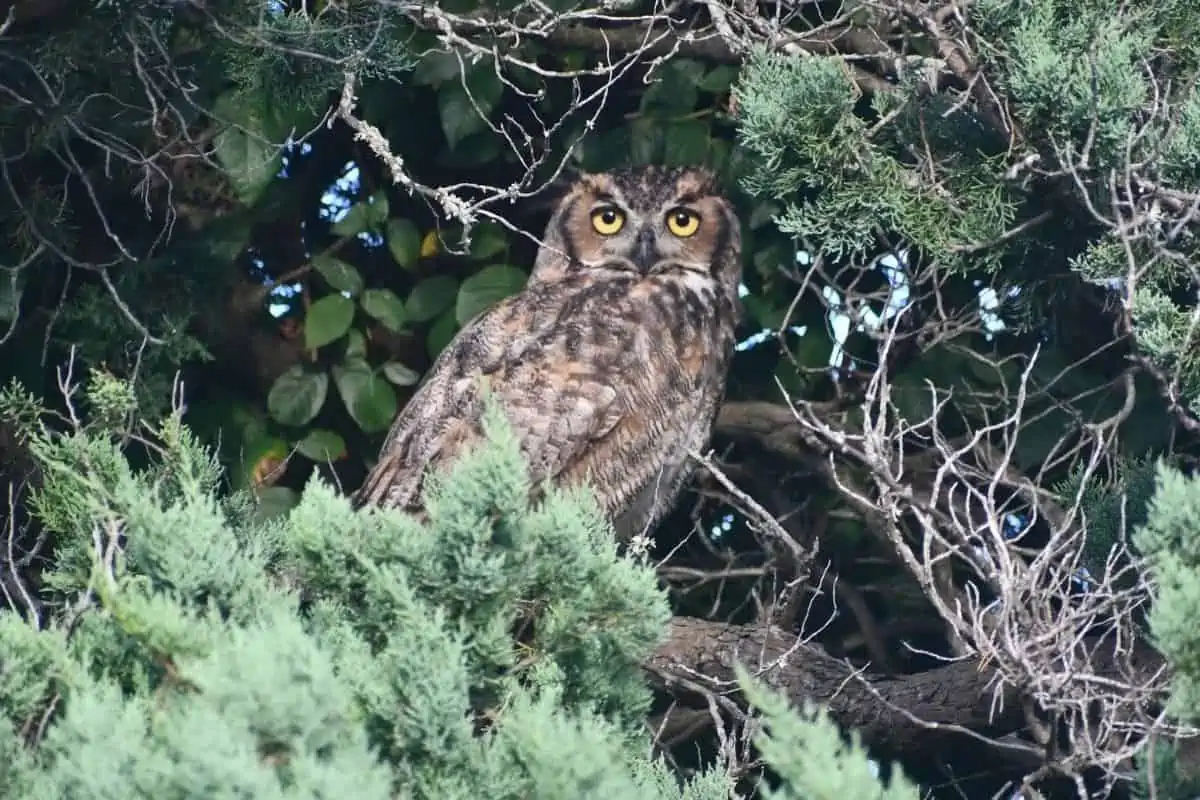Owls hold a fascination for many people. Because of their camouflage and nocturnal habits, most of us will never see them. They are all the more intriguing as a result. It might also make you wonder how many distinct species of owls may be discovered in my region? We’ll look at common and unusual owls in Mississippi in this article.
OWLS IN MISSISSIPPI
The barred owl, eastern screech owl, and great horned owl are the most common owls you’ll find in Mississippi. The barn owl, long-eared owl, northern saw-whet owl, short-eared owl, and snowy owl are just a few of the less well-known and uncommon species you may see.
1. BARN OWL

- Scientific name: Tyto alba
- Length: 12.6 – 15.8 in
- Wingspan: 39.4 – 49.2 in
- Weight: 14.1 – 24.7 oz
While they may be challenging to find, barn owls can be found throughout Mississippi all year. Grasslands, fields, ranches, agricultural land, and strips of forest are among their preferred open environments.
Man-made buildings with a lot of eaves and beams, such as barns, attics, and church steeples, are favorite nesting spots for barn owls. One way they got their moniker was probably this. Tree holes, caverns, and cliff sides are also home to these birds. During the day, Barn Owls are difficult to spot because they are very nocturnal.
They fly low across fields at night and during the day, using their exceptional hearing to detect mice and other rodents. When you see them in low light, their big, ghostly white face and belly may give you a frightening impression!
2. BARRED OWL

- Scientific name: Strix varia
- Length: 16.9 – 19.7 in
- Wingspan: 39.0 – 43.3 in
- Weight: 16.6 – 37.0 oz
The handsome brown and white striped barred owl is ubiquitous in Mississippi, and may be seen all year. These birds prefer to stay close to their homes for the majority of their lives, even if it means not leaving a ten-mile radius.
They do not like to be in the same area as the great horned owl, despite their range overlapping with it. Barred owl eggs, juvenile birds, and sometimes full-grown barred owls are all targets for large horned owls.
Barred owls like to live near water, especially if there are extensive unbroken forest paths. During the day, you may see them roosting in trees on a hike. When hunting, however, they are most active at night.
Their loud and distinctive hoot is likened to “who cooks for you?” Their call is distinguished as unique. “Who cooks for you all?” A mated pair will sing a variety of hoots, honks, caws, and gurgles throughout their courtship.
3. EASTERN SCREECH-OWL

- Scientific name: Megascops asio
- Length: 6.3 – 9.8 in
- Wingspan: 18.9 – 24.0 in
- Weight: 4.3 – 8.6 oz
Throughout most of the eastern United States, including Mississippi, this little owl is seen year-round.
Gray, brown, or “red” (really a reddish brown) are the three plumage tones of eastern screech owls. Feather patterns offer superb camouflage for blending in with tree bark, regardless of the color.
Their name might imply that they emit a wailing or screaming noise, however this isn’t true. They don’t hoot, instead producing high-pitched horse whinnies or “whinnies.”
Eastern screech owls may be attracted to your yard if you construct an appropriately sized nest box. Farmland, city parks, and suburban streets are all home to these little owls. Anywhere with some tree cover is a good bet.
4. GREAT HORNED OWL
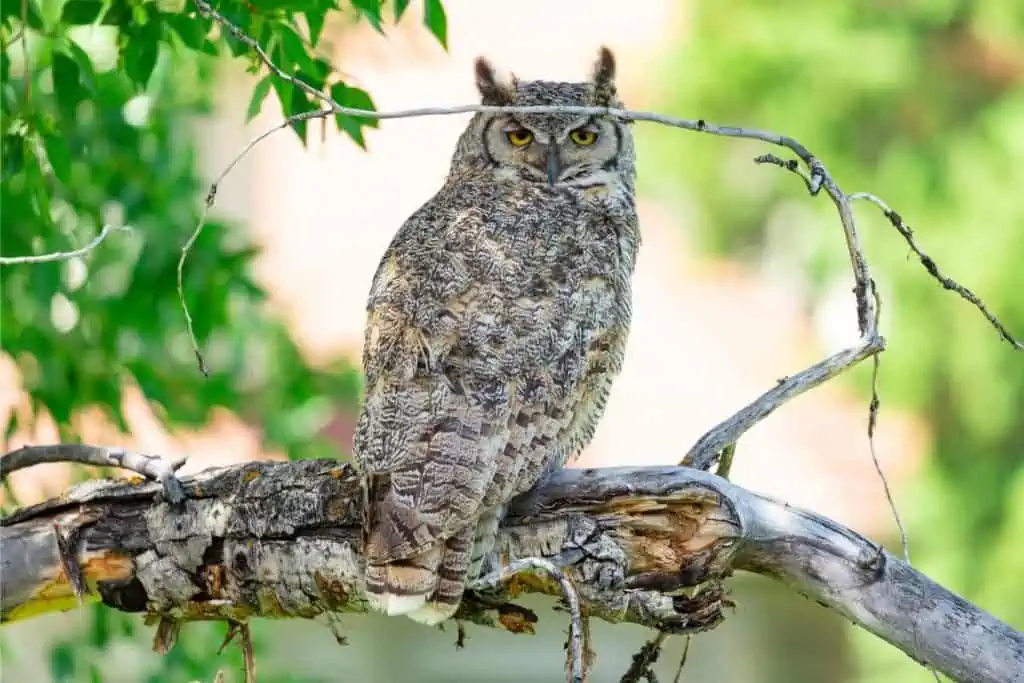
- Scientific name: Bubo virginianus
- Length: 18.1 – 24.8 in
- Wingspan: 39.8 – 57.1 in
- Weight: 32.1 – 88.2 oz
Because of their huge size, yellow eyes, and “horns” of feathers that stick out on either side of their head, great horned owls are one of the most common and well-known owls in North America.
Forests, marshes, deserts, and urban environments such as city parks are all habitats for these owls. Their plumage ranges from cool to warm brown, and it varies in color. Throughout Mississippi, they’re seen year-round.
Mammalian, avian, reptile, insect, and fish are among the many foods available to great horned owls. The sound owls make is often referred to as their hoot, which is what most people associate with owls.
5. LONG-EARED OWL

- Scientific name: Asio otus
- Length: 13.8 – 15.8 in (height)
- Wingspan: 35.4 – 39.4 in
- Weight: 7.8 – 15.3 oz
During the non-breeding season, long-eared owls may be seen in Mississippi on occasion, although they are uncommon and difficult to spot. Pine stands or woods near grassland and pastures are their preferred habitat.
They have a constantly surprised look with their bright yellow eyes, white V-shaped face pattern, round face disc, and long feather tufts that point straight up. Great horned owls may be distinguished from other types of owls by their rather rounded face with white V.
While not in the breeding season, long-eared owls are mostly quiet, so you won’t often hear them hooting around Mississippi. They do, however, roost in groups at times during this period, so locating them may be easier.
They are difficult to locate due to their excellent camouflage and roosting in thick forests.
6. NORTHERN SAW-WHET OWL
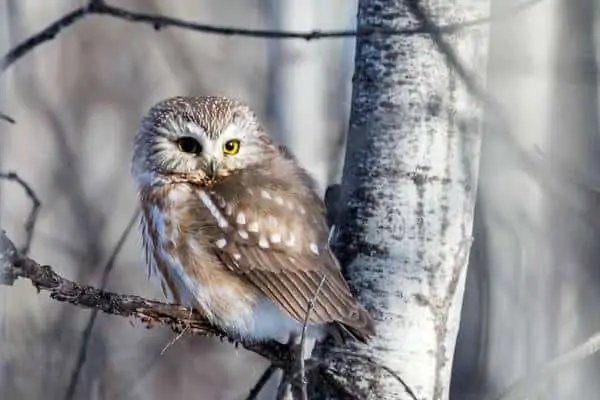
- Scientific name: Aegolius acadicus
- Length: 7.1-8.3 inches
- Weight: 2.3-5.3 oz
- Wingspan: 16.5-18.9 inches
Northern saw-whet owls have a spherical head and yellow eyes. There are a few additional factors that make locating these owls particularly difficult, in addition to their small size.
Because they’re perched motionlessly on a branch, their mottled brown plumage blends in easily with the surrounding trees. These owls are only active at night, so you won’t notice them while it’s light out. They’re also naturally quiet.
Learning and listening for a northern saw-whet owl at night, especially between January and May, is the best bet for finding one. They are known as the “saw-whet” owl because of their unique cry, which sounds like a blade being sharpened on a whetstone. A succession of whistled tones of the same pitch make up their too-too-too cry.
The diet of these owls primarily includes small mammals like mice and voles, and they prefer thick and mature woods. In Mississippi, these owls are only seen during the non-breeding season and only visit for a few months.
7. SHORT-EARED OWL
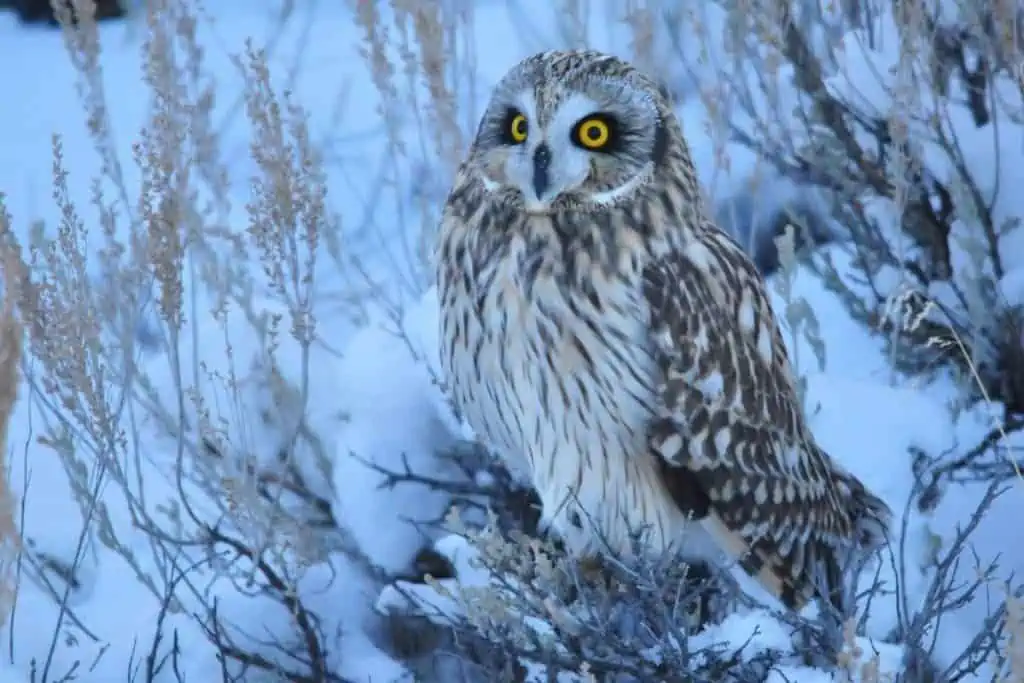
- Scientific name: Asio flammeus
- Length: 15 in
- Wingspan: 38 in
- Weight: 12 oz
Short-eared owls are mostly found in Canada and northern United States during the summer, with a few exceptions coming down into Mississippi during the non-breeding season.
They do have ear tuft feathers, as the name implies, but they are so short that they are virtually never seen. Marshes, gravel and rock quarries, fields, woodlots, and thickets are all good places to look during the winter. In connection to the population of their prey, such as moles, rats, rabbits, and weasels, their populations in a specific region might fluctuate from year to year.
Being particularly sensitive to habitat loss and fragmentation from the vast open grasslands they need, their populations are believed to be declining overall.
They may be found all around the world and may go considerable distances over open water.
8. SNOWY OWL
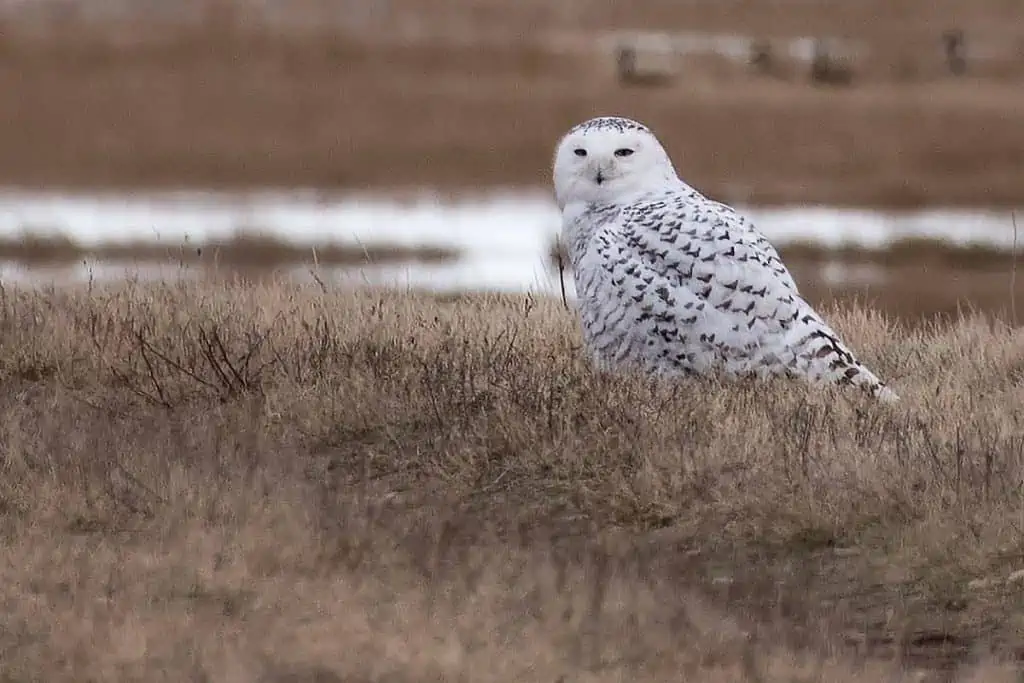
- Scientific name: Bubo scandiacus
- Length: 20.5-27.9 inches
- Weight: 56.4-104.1 oz
- Wingspan: 49.6-57.1 inches
The wintering range of snowy owls spans much of Canada, but each year, they are extending their range farther south into the United States. The snowy owls’ winter range extends into Mississippi, although they have only been seen two times. In 2014, the Mahannah Wildlife Management Area hosted the most recent I’m aware of.
During the summer, these magnificent owls move as far north as Canada’s and Greenland’s Arctic areas to breed. All hours of the day, they’ll be looking for their favorite summer snack, lemmings.
Owls who migrate frequently don’t stay close to their parents once they reach maturity. Hundreds of miles apart, owls from the same nest that had been followed have been discovered.
